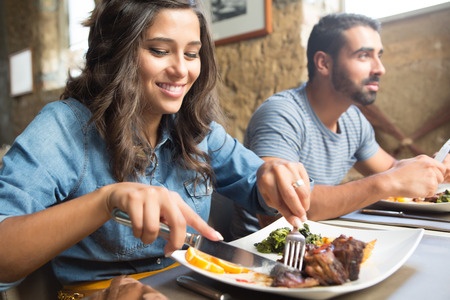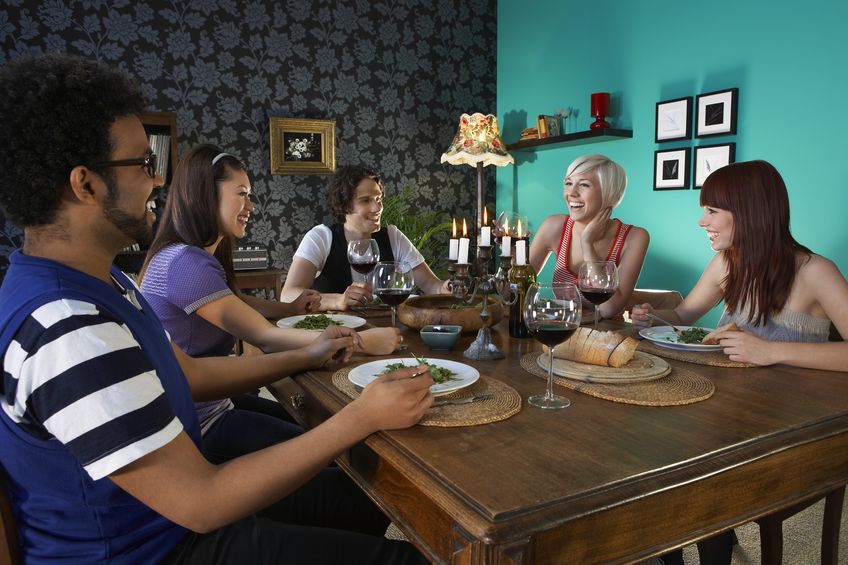How to Avoid Dining Faux Pas

Dining etiquette emphasizes order during a meal. When order is missing, chaos or confusion occurs.
What does an orderly meal look like?
- Diners are seated comfortably at the table.
- The host begins the meal.
- Food is served, either plated or family-style.
- If served family-style, dishes are passed to the right until everyone partakes of each dish.
- The meal is enjoyed along with pleasant conversation.
- The host ends the meal.
While there are additional elements that vary from table to table, family to family, and group to group, the above list remains the foundation of an orderly meal.
However, as with any occasion involving humans, orderliness is dependent on the behavior of each individual.
Polite Behavior
Polite behavior at the table is just as important as it always was, socially and professionally. The manners you display during a meal tell others a lot about you. Which is why no one wants to learn that his table habits were, in fact, not beyond reproach.
Good table manners fall in the realm of modesty in behavior and gesture. Your use of utensils, conversation style, volume of voice, method of passing items, and treatment of service staff should remain "under the radar" of behavior that would cause others to immediately take notice.
Etiquette expert, Mary Mitchell, has her “Ten
Commandments” (or “Thou Shalt Not’s”) for avoiding disruptive mistakes
at a lunch or dinner, especially for business:
- Jump straight into business talk.
- Be late.
- Table-hop. At gala events, there is always the temptation to move around the room.
- Talk politics, diet, or family.
- Dominate conversation.
- Dawdle over ordering or eating.
- Drink too much alcohol.
- Fight over who pays the bill.
- Neglect thy table manners. (No smacking, slurping, chewing with mouth open, or picking teeth.)
- Forget to show appreciation.
Dining Faux Pas
The "Ten Commandments" above will help keep you under the radar of noticeable dining behaviors. But what does a dining faux pas look like?
- Talking while brandishing or waving a knife or fork to make your point.
- Not continuing to pass food around the table even though everyone hasn't been served.
- Not being mindful of napkin signals or using your napkin incorrectly.
- Placing spit-out items (seeds, gum, gristle) on sugar packets, wrappers, or directly on the table.
- Placing used utensils on the table or placing them so they hang off your plate and are liable to fall when the plate is removed.
- Placing your elbows on the table when food is in front of you and interfering with the space of your table companions.
- Making negative remarks about the food.
- Taking phone calls or checking messages during the meal. Or placing your phone on the table - just in case.
- Taking food from someone's plate, drinking someone's drink, placing food on someone's plate and other personal space invasions.
- Blowing your nose at the table.
- Usurping the leadership role of the host under the guise of "helping."
- Re-arranging plates, stacking or clearing dishes to hand to the server. They actually prefer that you don't help.
- Correcting another person's behavior.
The best way to avoid a dining faux pas is to remain mindful of where you are, what the occasion is, and what your role is.
If you are concerned with how to eat a certain food that is served, follow what your host is doing. If conversation at your end of the table is lacking, ask an open-ended question to get it going again. If another diner makes a faux pas, help smooth it over.
Courtesy and respect will always keep faux pas at bay when dining, or when enjoying any activity.














